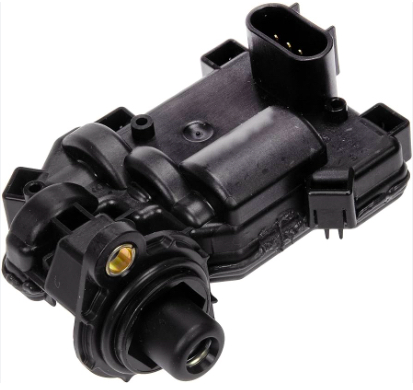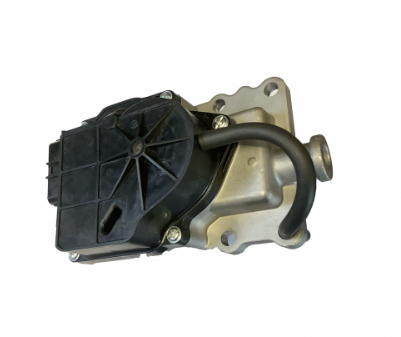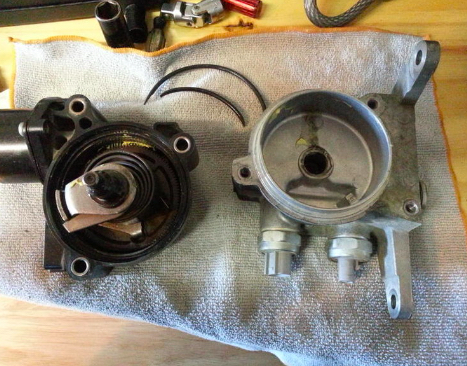How To Tell If 4wd Actuator Is Bad? You can learn all the details from this comprehensive guide. Any malfunction can hinder the optimal performance of a 4WD vehicle in its actuator. As a result, the overall riding experience may suffer greatly, and in severe cases, it can even lead to hazardous accidents. Therefore, maintaining the proper functioning of the actuator is crucial for safe and efficient driving.
🚨You may be interested in:
However, identifying when a 4WD actuator is faulty may not always be apparent. To assist with this matter, below are listed some symptoms of a bad 4WD actuator that one may have overlooked previously.
What Is A 4WD Actuator & How It Works?

The electric device serves a crucial purpose in vehicles – engaging the front differentials to allow all four wheels to operate instead of just the two back wheels. This key feature increases power and control, allowing drivers to navigate various terrains easily.
This advanced mechanism can be easily controlled through a switch on the vehicle’s dashboard, giving users full control over when to engage or disengage all four wheels. While not present in every car, 4WD actuators are commonly found in 4WD vehicles and provide an additional power boost when needed.
However, it is important to note that compatibility between the engine and the actuator is necessary for optimal performance and engagement of the front wheels. The intricate workings of both the axle actuator and transfer case work together seamlessly to deliver the required torque to all four wheels, as it connects input from the transmission directly to each wheel.
How To Tell If A 4wd Actuator Is Bad? 4 Symptoms To Detect:

One can easily identify potential issues with the actuator by observing a few noticeable symptoms. It is crucial to remain vigilant and attentive to detect vehicle performance changes. Some common signs of a malfunctioning actuator include unusual noises from the 4WD, difficulty shifting gears, and jerking movements while driving.
Additionally, noticing that their 4WD struggles to engage or disengage from four-wheel drive mode could indicate a problem with the actuator. By paying attention to these telltale signs, one can proactively address any issues with their vehicle’s actuator before they escalate into larger problems.
1. Hesitation In Throttle Response
A vehicle operating at its peak performance will respond promptly to throttle input, with only occasional instances of slight hesitation. However, if the 4wd actuator is defective or deteriorating, a persistent delay in throttle response may be observed. In such cases, the damaged actuator can send false signals to the electronic control module (ECM), resulting in excessive fuel delivery to the engine compared to air intake.
👀Look at this:
This rich situation within the combustion chamber can lead to delayed fuel and air mixture ignition. While this is one potential cause for hesitated throttle response, other factors could also contribute. For instance, a malfunctioning kicker actuator within the Electronic Fuel Injection (EFI) system or a faulty sensor requiring replacement could also result in this symptom. It is important not to jump to conclusions based on one particular sign but to consider all possible indicators to diagnose and address any underlying issues accurately.
2. Reduction In Fuel Economy
One may become aware of decreased fuel efficiency in their vehicle, which can indicate a potentially serious issue. This should not be overlooked. When the actuator responsible for airing the air-to-fuel ratio sends incorrect signals to the computer, it can lead to inefficient fuel use and potential damage to the engine if left unaddressed. Prompt action is necessary to avoid further complications.
3. Black Smoke
When the air-to-fuel ratio is not properly balanced, an excess amount of unburnt energy will inevitably result. This energy surplus tends to escape through the tailpipe through thick black smoke. Such a phenomenon is highly undesirable and indicative of underlying issues within the vehicle’s systems. Just as before, there are numerous potential causes for this occurrence, all pointing towards a need for immediate attention and resolution.
🚀Recommended article:
4. Engine Stalling
A damaged or worn-out throttle kicker actuator can greatly impact the idle functionality of an engine. The result may be stalling or shutting off when the idle drops too low. This issue can sometimes occur even if the actuator is not functioning at all, thus requiring a replacement. This is especially prevalent in newer 4WD vehicles, as a failed throttle actuator can trigger an OBD-II error, which will be stored in the ECU for diagnostic purposes.
Final Verdict
The process of identifying a faulty 4WD actuator involves recognizing several key indicators. Neglecting these signs could result in further damage and potentially more costly repairs. Hence, it is imperative to be vigilant and address these symptoms promptly.
